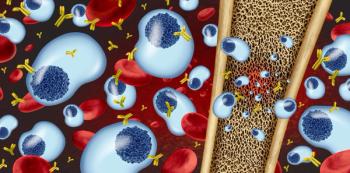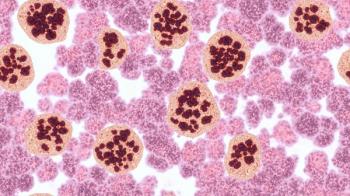When I first applied for pharmacy residencies, my focus was on inpatient programs. After I did not match in the first phase, a residency program director from a community-based program reached out and invited me to an open house. Through that conversation, I realized how expansive and impactful community pharmacy could be. Dispensing was just a small part of pharmacy; the residency offered ambulatory care opportunities, academic experiences, and a new way to serve patients.
About the Author
Erica Bell, PharmD, is a PGY-1 community-based pharmacy resident at Riverside Health, Newport News, Virginia. She enjoys volunteering at health fairs, speaking on alumni panels, and awarding scholarships to students from minority populations who are interested in health science.
My introduction to pharmacy was rooted in the community setting. I had worked my way up as a pharmacy associate, technician, intern, and pharmacist before pursuing residency. Community pharmacy taught me real-world skills, such as counseling patients, answering questions on the spot, and building trusting relationships. I found fulfillment not just in dispensing medications but also in educating and empowering patients. Throughout my residency year, I have precepted pharmacy students across outpatient pharmacy settings, geriatrics, specialty pharmacy, population health, and diabetes clinics. I even taught at a local school of pharmacy. I make it a point to expose them to all the facets of community practice, from ambulatory care to population health initiatives, so they leave with a greater appreciation of the profession’s scope.
When I entered pharmacy school, the competition was fierce: Pharmacy College Admission Test (PCAT) exams, full classes, and limited spots made gaining admission a major accomplishment. Today, application numbers have declined nationwide, and many programs have removed the PCAT requirement entirely to compensate for this. Although the field is evolving, it sometimes feels like some of the grit and passion once required to enter the profession have lessened.1 Unfortunately, there is still a stigma surrounding community pharmacy. I have seen colleagues react with skepticism when I tell them I pursued a community-based residency. Some perceive community pharmacists as being on a different, somehow “lesser” learning curve; however, the reality is that community pharmacy demands quick thinking, comprehensive drug knowledge, and constant patient interaction. It is a high-paced, critical, and dynamic environment that prepares pharmacists for anything.
The pharmacist shortage following the COVID-19 pandemic has made it even more important to support those working in community settings. Compensation often does not reflect the level of care provided, and work conditions can be challenging, especially in corporate chain environments.1 However, I have noticed that independent pharmacies and outpatient hospital pharmacies often provide more collaborative environments, allowing pharmacists to become more integral members of the health care teams.
Community pharmacy is far more than simply counting pills. It requires knowledge in insurance navigation, pediatric dosing, drug-drug interactions, OTC therapies, specialty medications, and therapeutic alternatives. It sharpens communication skills, builds patient trust, and reinforces the pharmacist’s role as a health care educator and navigator.
Collaborative practice agreements have opened the door for community pharmacists to prescribe, adjust therapies, administer immunizations, provide emergency care, and deliver preventive services. Community pharmacists are often the first responders during natural disasters and public health emergencies, offering care and support at critical moments. We help address medication adherence, manage chronic disease states, and advocate for patients’ access to necessary therapies, including navigating complex appeals for specialty medications.
As a profession, we must break the outdated stigma surrounding community pharmacy. We must work together to show students and each other the wide array of opportunities available in this setting. We must advocate for better working conditions, greater respect, and stronger representation in legislative and organizational spaces. Above all, we must remind future pharmacists that every area of practice matters and that every patient interaction is an opportunity to make a lasting impact. The truth is, we can do hard things. Pharmacy demands resilience, and so does life. Choosing to stand tall in community pharmacy and advocating for patients, inspiring future pharmacists, and strengthening our profession make every effort meaningful.
REFERENCE
Hegener M, Johnson K. Academia’s support of community pharmacy in this time of transformation. Am J Pharm Educ. 2024;88(9):101261. doi:10.1016/j.ajpe.2024.101261





















































































































































































































